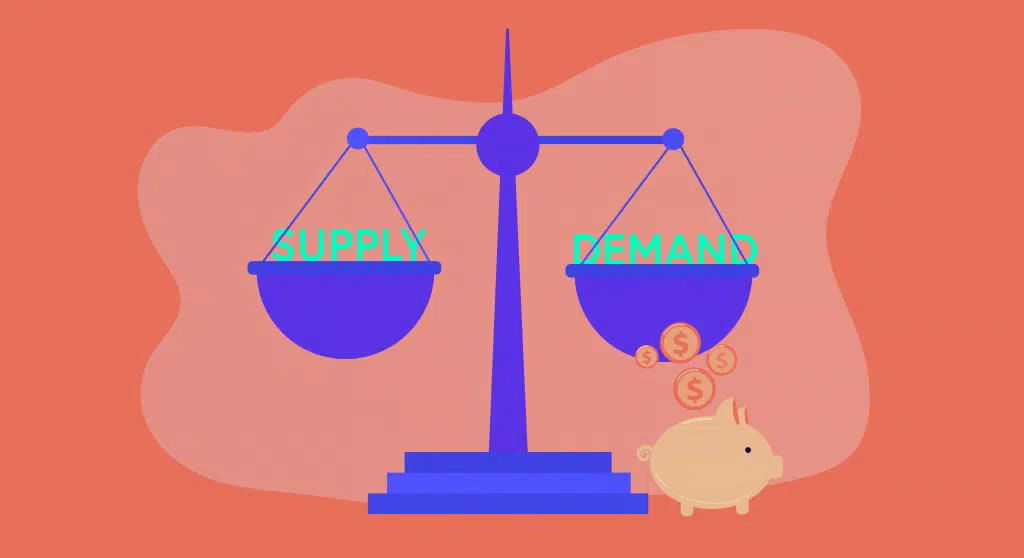
The Most Confusing Economics Concepts Explained Series: Supply and Demand
Have you ever wondered why the price of something might change suddenly? Like, for instance, the skyrocketing prices of above-ground swimming pools amidst the coronavirus pandemic? One common reason lies in the concept of supply and demand. This economic principle has a very real effect on how products are priced and your ability to obtain the goods and services you want and need.
What is supply and demand?
“Supply and demand” is a fundamental economic model that explains how the availability of a product or service (the supply) and the number of people who want to buy it (the demand) determine its price. For example, the supply of a popular, limited-edition pair of sneakers can determine how much people will pay for them. If there is a limited supply, and they are set to sell out quickly, the asking price can be higher than a similar sneaker with a much larger supply that people know they can buy at any time. However, there is a limit to the asking price. Even enthusiasts will eventually refuse to buy at a certain price point.
As a consumer, you only have so much money to spend, and if you buy a pair of sneakers, you can’t buy anything else with that money. So the cost of the sneakers has to match their value to you. The seller must try to ask for the highest amount they can without tipping the scales and turning off your sneaker demand. This relationship, or tension between supply and demand, can keep the prices for many goods within a reasonable range—provided they aren’t interfered with artificially.
There’s more to it
Whether you look at shoes, real estate, or stocks, the less there is of something, the more the seller can ask for it—assuming there’s a real demand. For example, there may be only two houses available in a particular lakefront residential area, but if the water is polluted or if it’s next to a noisy highway, the houses will still be hard to sell at anything but a very low price because the demand will be poor. However, if the location is desirable, the lack of choices will increase the demand and prices.
There are also some instances where supply can’t keep up with demand, and the seller can continue to sell at the highest price possible. The price may be kept high until the demand falls, or the supply increases to the point where there is no threat of losing out by waiting for a better price.
Perceived supply and demand matters
One final thing to know about supply and demand is that it doesn’t depend on facts to influence the market. A perceived supply can determine price just as much as actual supply. When consumers worry that there may be a shortage of an important household staple, it could cause them to assume a limited supply and run out to buy more than they normally would.
We saw this in the spring of 2020 when COVID-19 was hitting the news cycles and people were stocking up on toilet paper. The uncertainty of the situation caused people to speculate that there may not be enough toilet paper for their needs, so they bought more than usual and prompted a shortage, as well as a price increase. This caused the perceived threat to become (at least for a time) a reality.
So whether real or perceived, supply shortages can drive demand. Further, demand can be reduced by supply surpluses. And this ongoing ebb-and-flow causes the prices you’re asked to pay to fluctuate.